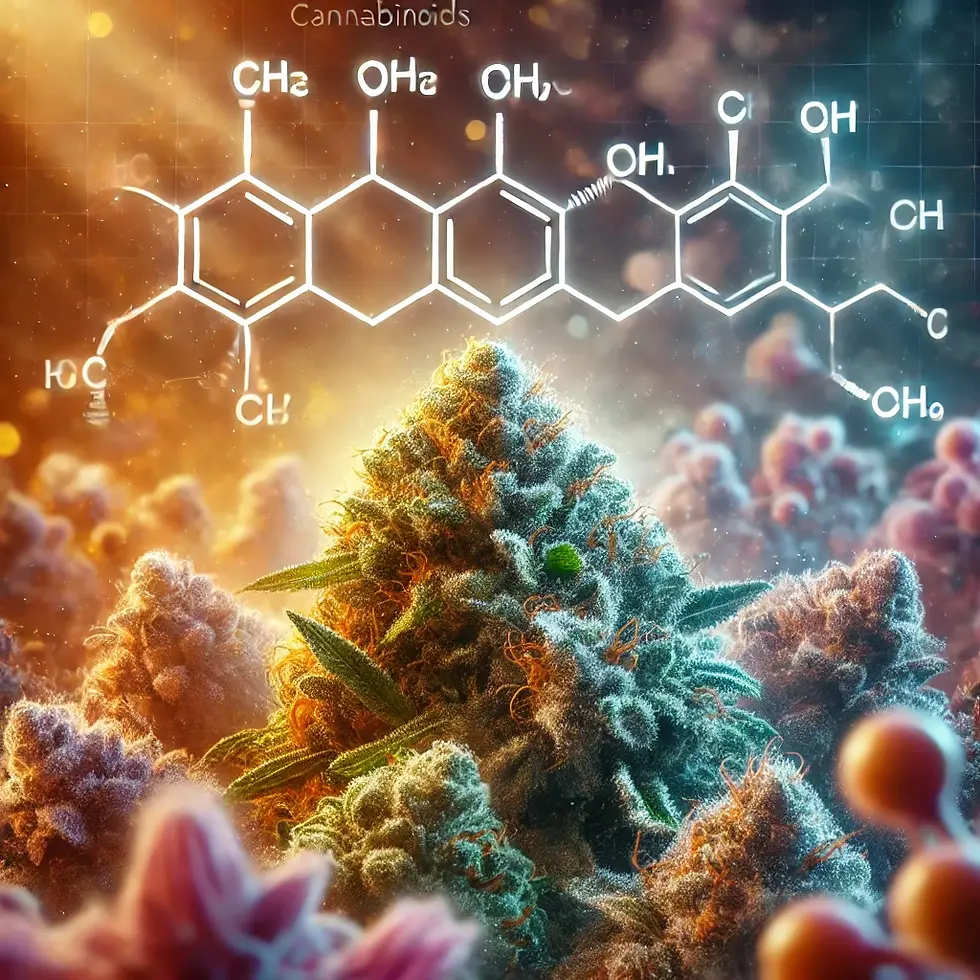Indica vs. Sativa Is a Lie: Why Strain Names Don’t Determine Effects
- Clutch Plug

- Jan 29
- 4 min read

The cannabis industry loves to sell effects. Dispensaries slap labels on jars—"indica for sleep, sativa for energy"—as if strain names guarantee a specific experience. But the truth is, the way weed affects you isn’t about whether it’s “indica” or “sativa.”
What Actually Matters?
Cannabinoid ratios (THC, CBN, CBD, CBG) shape the high.
Terpenes (myrcene, linalool, caryophyllene) influence how cannabinoids interact.
Full-spectrum chemistry matters more than THC percentage alone.
At Clutch Plug, we don’t push “sleep strains” or mood-based marketing. What we sell is high-quality, well-grown flower. What you feel is up to your body chemistry.
Related Reading:
What Actually Shapes the High?
Forget strain names and growing methods—the way weed feels is all about its chemical makeup.
1. Cannabinoids: The Primary Drivers
THC – The main psychoactive compound, but effects shift depending on what it’s paired with.
CBN – A THC breakdown product often linked to heavier, slower effects.
CBD – Modulates THC’s intensity—sometimes smooths out the high, sometimes adds clarity.
CBG – Still being studied, but some say it rounds out the experience.
2. Terpenes: The Chemical Influence on Effects
Myrcene – Found in mangoes, often associated with a slower, “heavier” high.
Linalool – Also found in lavender—sometimes linked to calming effects.
Caryophyllene – Spicy and peppery, interacts with cannabinoid receptors directly.
3. Why Full-Spectrum Flower Matters
A strain’s entire chemical profile matters more than just THC levels.
Some high-THC strains hit harder than others because of terpene and cannabinoid balance.
It’s not about indica or sativa—it’s about what’s in the plant.
Strains with Cannabinoids & Terpenes Linked to Deeper Relaxation
While no strain guarantees a specific experience, some have chemical profiles that lean toward slower, heavier highs.
Granddaddy Purple
Cannabinoid Profile: THC-dominant with some CBN present.
Terpenes: Myrcene (strongest), Caryophyllene, Pinene.
What Makes It Stand Out: Full-bodied high, slow-burning effects.
Bubba Kush
Cannabinoid Profile: THC-dominant with a noticeable CBG presence.
Terpenes: Caryophyllene, Myrcene, Limonene.
What Makes It Stand Out: Spicy, earthy profile with a smooth finish.
Purple Punch
Cannabinoid Profile: THC-heavy with higher-than-average CBN.
Terpenes: Linalool, Myrcene, Caryophyllene.
What Makes It Stand Out: More euphoric than GDP, but just as full-bodied.
Hindu Kush
Cannabinoid Profile: Balanced THC, with CBN and minor CBD content.
Terpenes: Myrcene, Limonene, Pinene.
What Makes It Stand Out: Long-lasting, full-spectrum effects.
None of these strains are “for sleep” in the marketing sense—but their cannabinoid and terpene profiles lean toward slower, more physical effects.
THC Percentages vs. Full-Spectrum Chemistry
Why 30% THC Doesn’t Mean Stronger Weed
Dispensaries love to push high-THC strains, but THC percentage alone doesn’t tell you how strong the high will be.
Some 18-22% THC strains hit harder than 30% strains because of their full-spectrum chemistry.
Terpenes influence how THC absorbs in the body. A strain with a strong myrcene profile might feel “heavier” than a higher-THC strain with weak terpene content.
CBN and other minor cannabinoids can change how the high feels—sometimes slowing it down or making it last longer.
The Role of Terpenes & Cannabinoids in Strength
Myrcene-heavy strains (like Granddaddy Purple) tend to “slow down” the high.
Linalool-heavy strains (like Purple Punch) tend to feel more relaxing.
CBN-heavy strains (like Hindu Kush) often feel deeper and longer-lasting.
If you’re picking a strain based on THC alone, you’re missing the full picture.
Related Reading:
The Role of Minor Cannabinoids
THC and terpenes get all the attention, but minor cannabinoids like CBN, CBD, and CBG can change the way a strain hits.
1. CBN (Cannabinol)
Created when THC degrades over time.
Often associated with a slower, heavier high.
Found in higher levels in Hindu Kush and aged Bubba Kush.
2. CBD (Cannabidiol)
Can dampen the intensity of THC, making the high smoother and more clear-headed.
Found in balanced strains like Harlequin or some Northern Lights phenos.
3. CBG (Cannabigerol)
Present in smaller amounts, but may affect how THC interacts with the body.
Some smokers report it rounds out the high, making it less jittery.
A well-grown strain with a balanced mix of THC, minor cannabinoids, and terpenes will always feel more complete than a high-THC strain with weak chemistry.
Related Reading:
The Bottom Line: It’s About Chemistry, Not Marketing
Why Clutch Plug Doesn’t Push “Sleep Strains”
Most dispensaries try to sell effects-based weed—but at Clutch Plug, we don’t do gimmicks.
We don’t claim a strain will “make you sleepy” or “boost your mood.”
We focus on cannabinoid and terpene profiles, not marketing buzzwords.
What you feel depends on your body’s chemistry—not a label on a jar.
How to Find a Strain That Works for You
Ignore the THC number. Look at the terpene and cannabinoid breakdown.
Try different terpene profiles—you might react better to myrcene-heavy strains than limonene-heavy ones.
Test different minor cannabinoid levels—CBN-rich strains might feel better than pure THC-dominant ones.
At the end of the day, real smokers know that good weed is about full-spectrum quality—not dispensary marketing.
Related Reading:
Conclusion: Finding the Right Chemistry, Not Just a Name
There’s no such thing as a “sleep strain”—only cannabis with the right balance of cannabinoids, terpenes, and full-spectrum compounds that interact differently for each person.
What Actually Matters?
Full-spectrum chemistry—THC, minor cannabinoids, and terpenes working together.
Cannabinoid ratios—CBN, CBD, and CBG affect the high just as much as THC.
Terpene content—myrcene, linalool, and caryophyllene can shape how a strain feels.
What Doesn’t Matter?
Indica vs. Sativa labels—these terms don’t determine effects.
THC percentage alone—higher THC doesn’t mean stronger or longer-lasting.
Marketing buzzwords—dispensaries push strains based on trends, not real chemistry.
At Clutch Plug, we don’t sell hype—we sell real quality.


